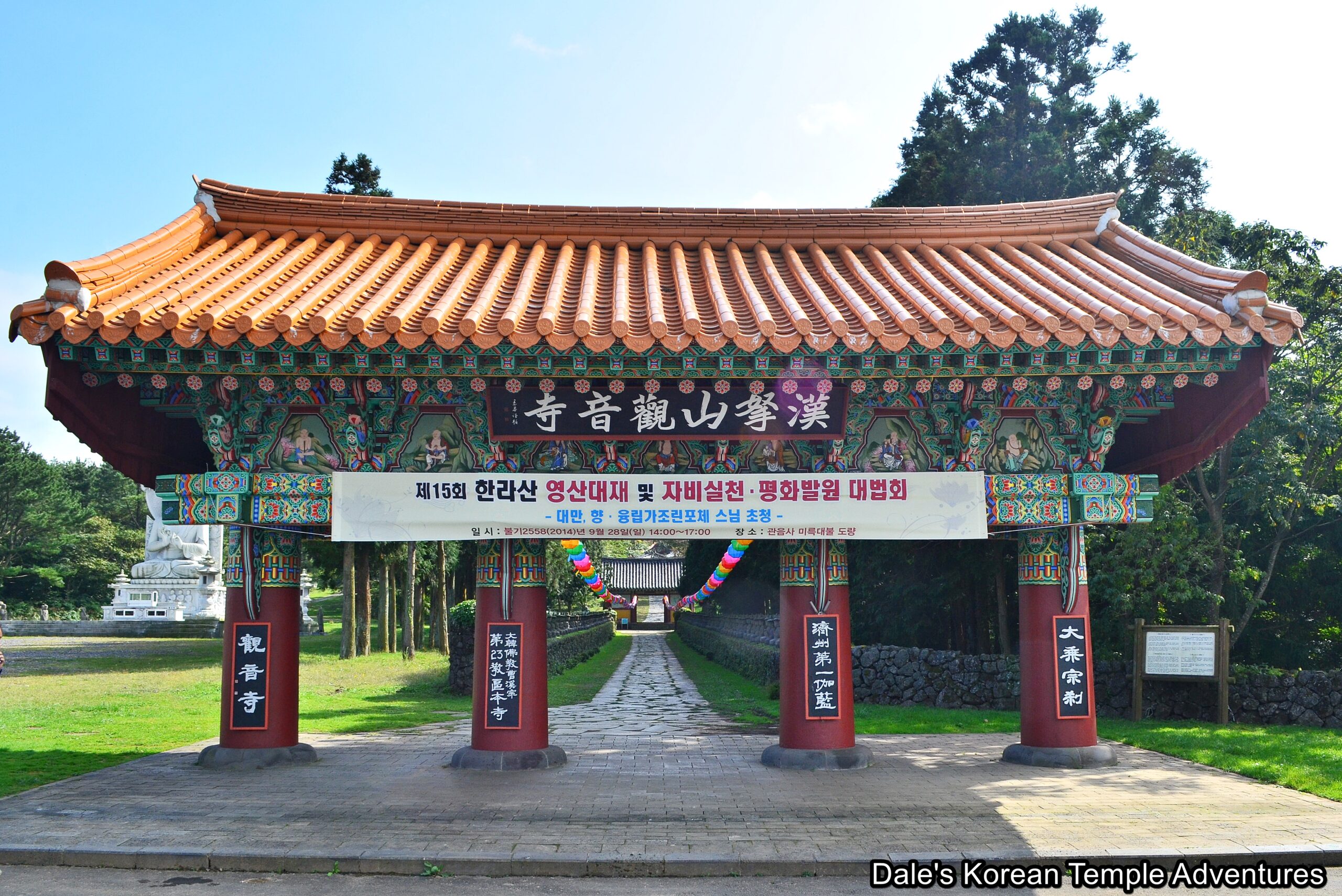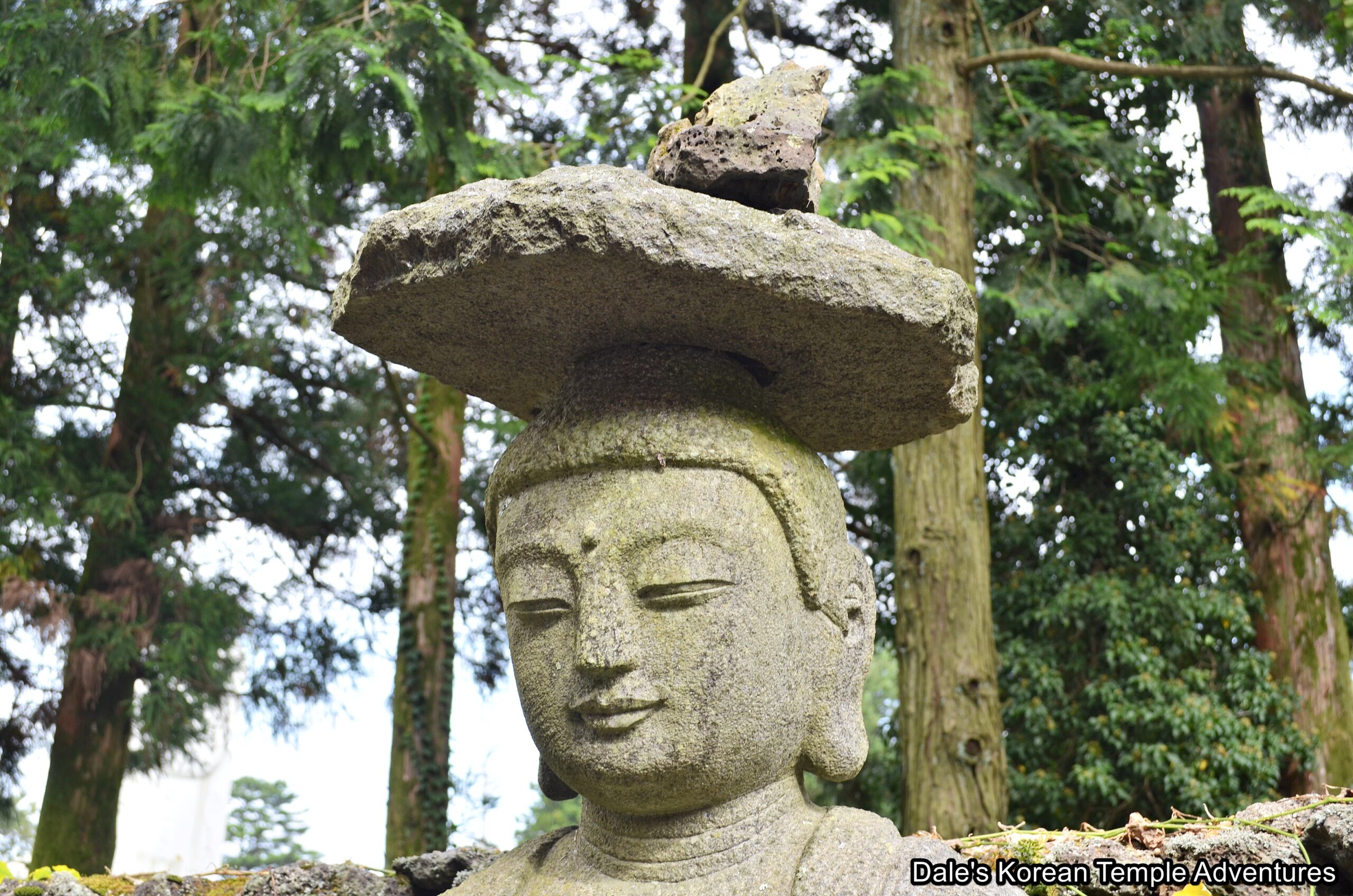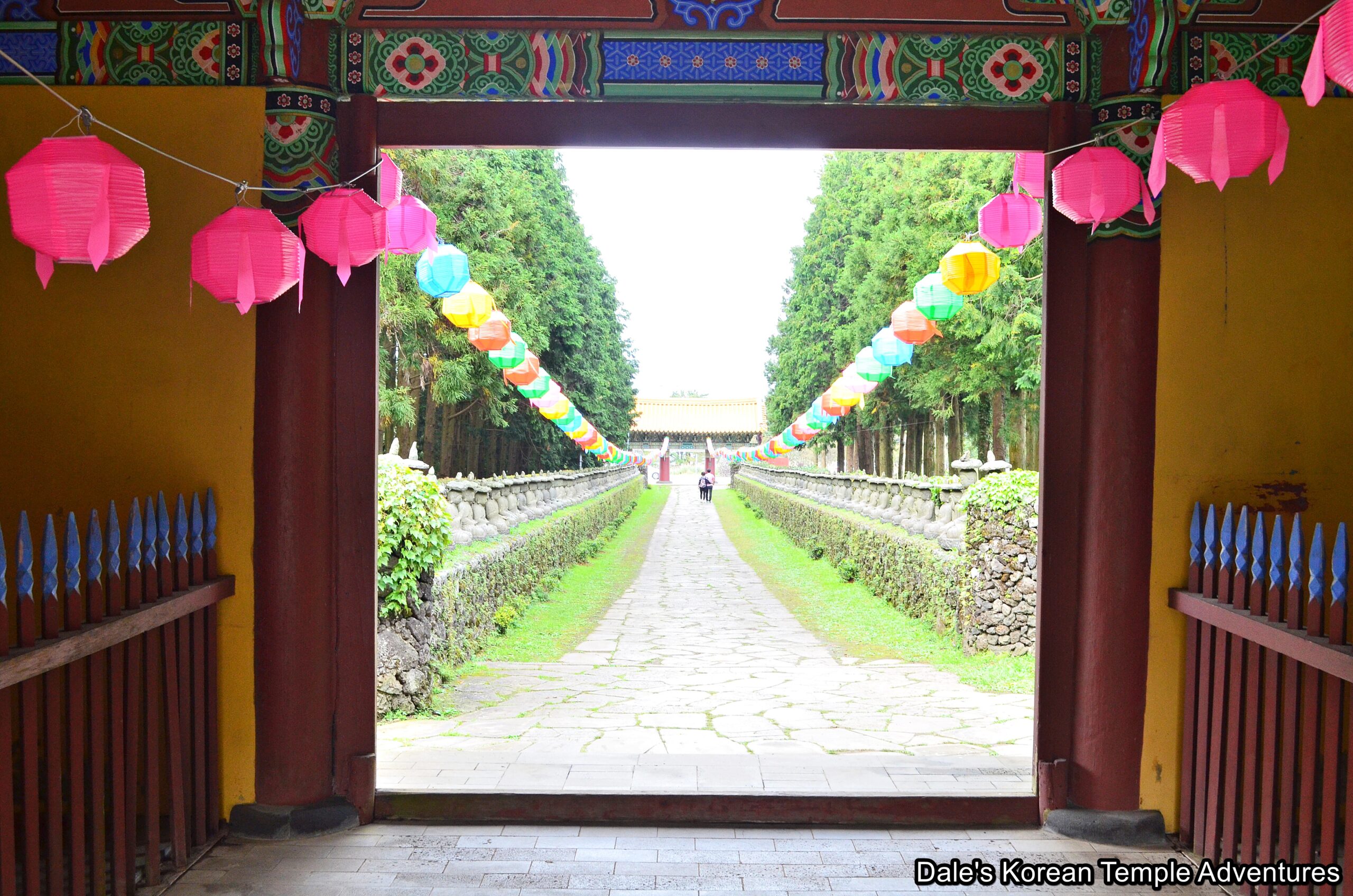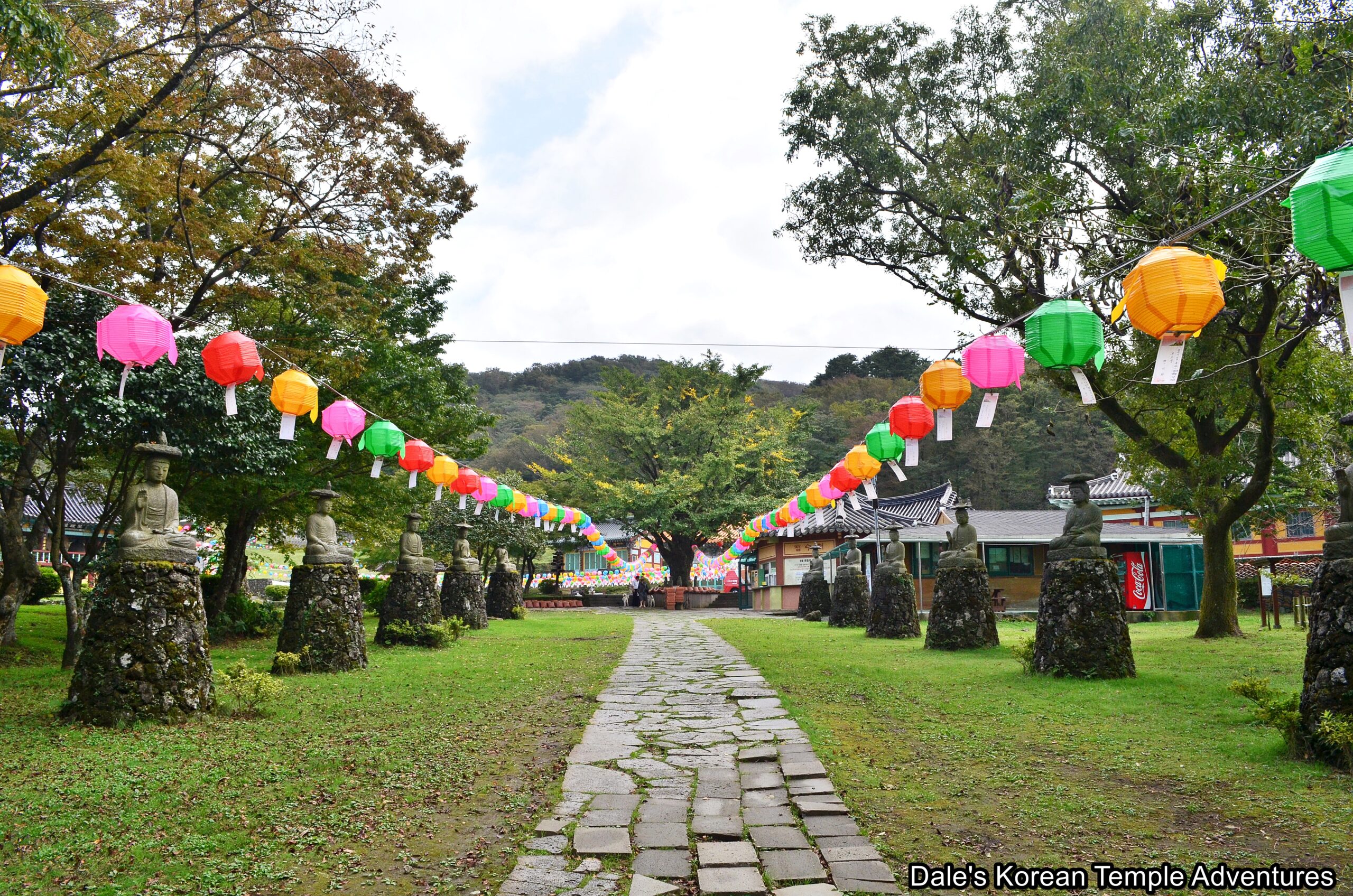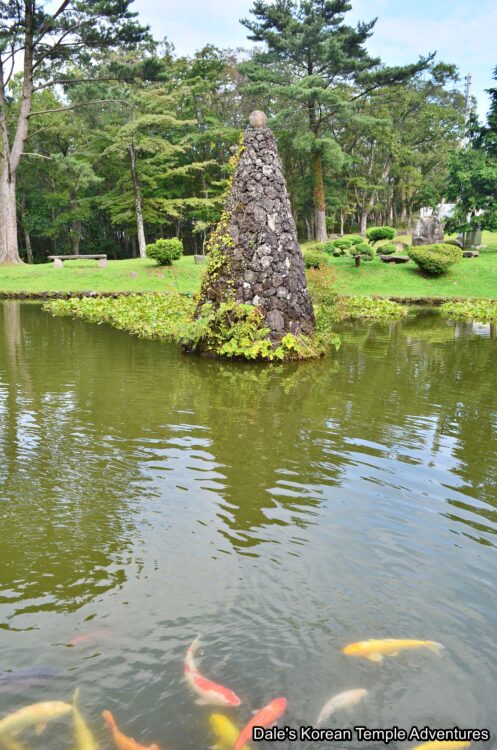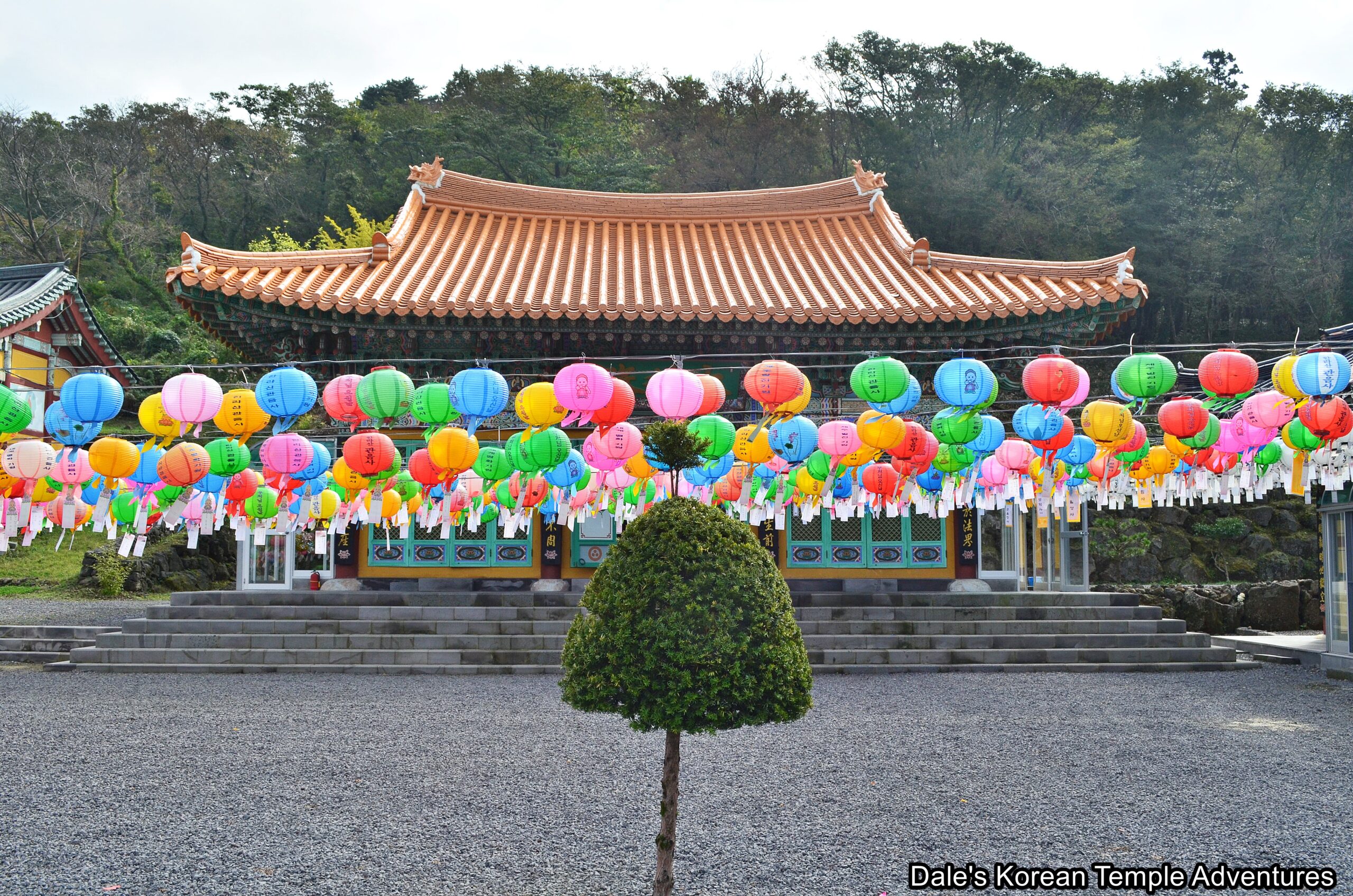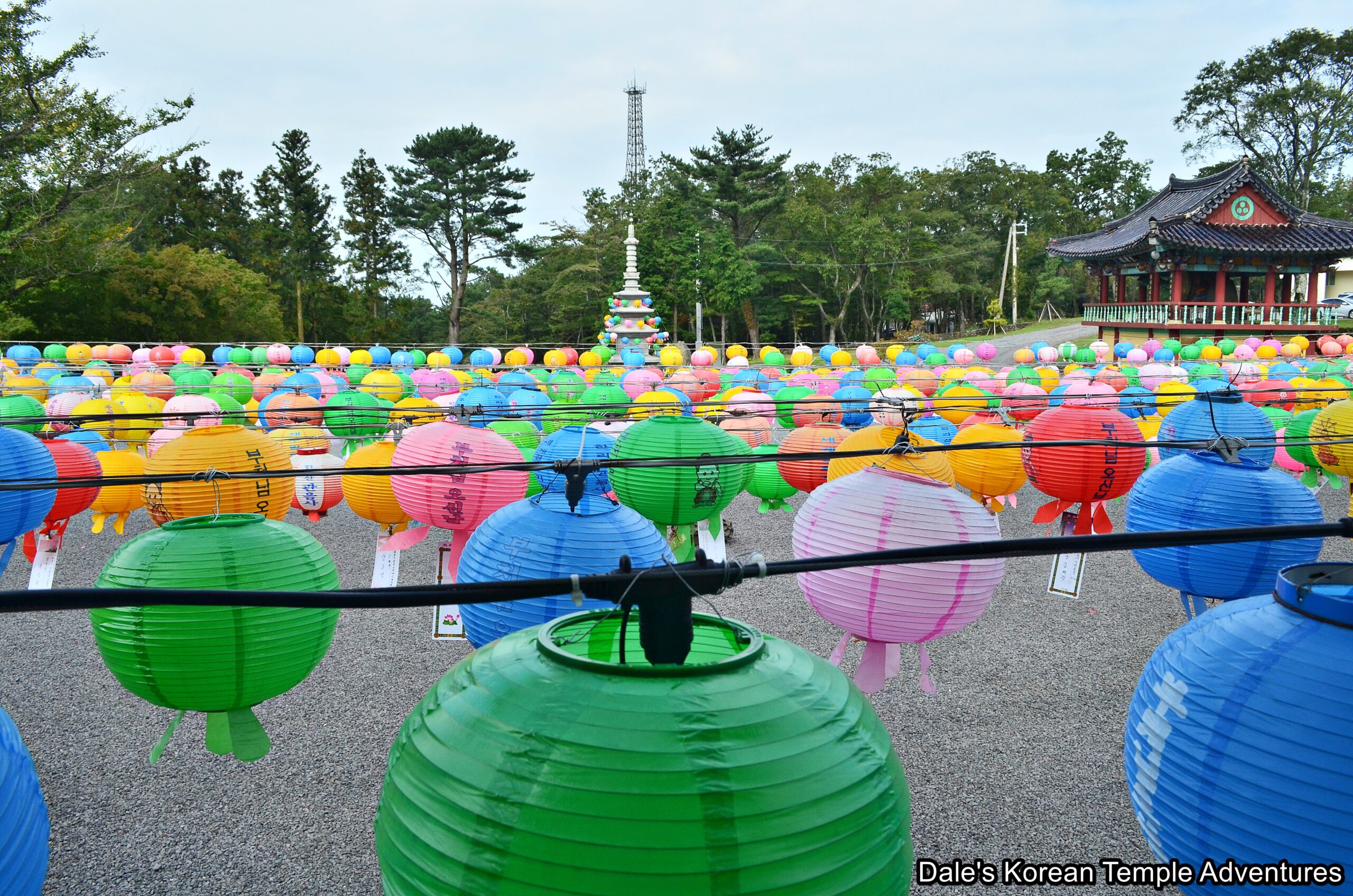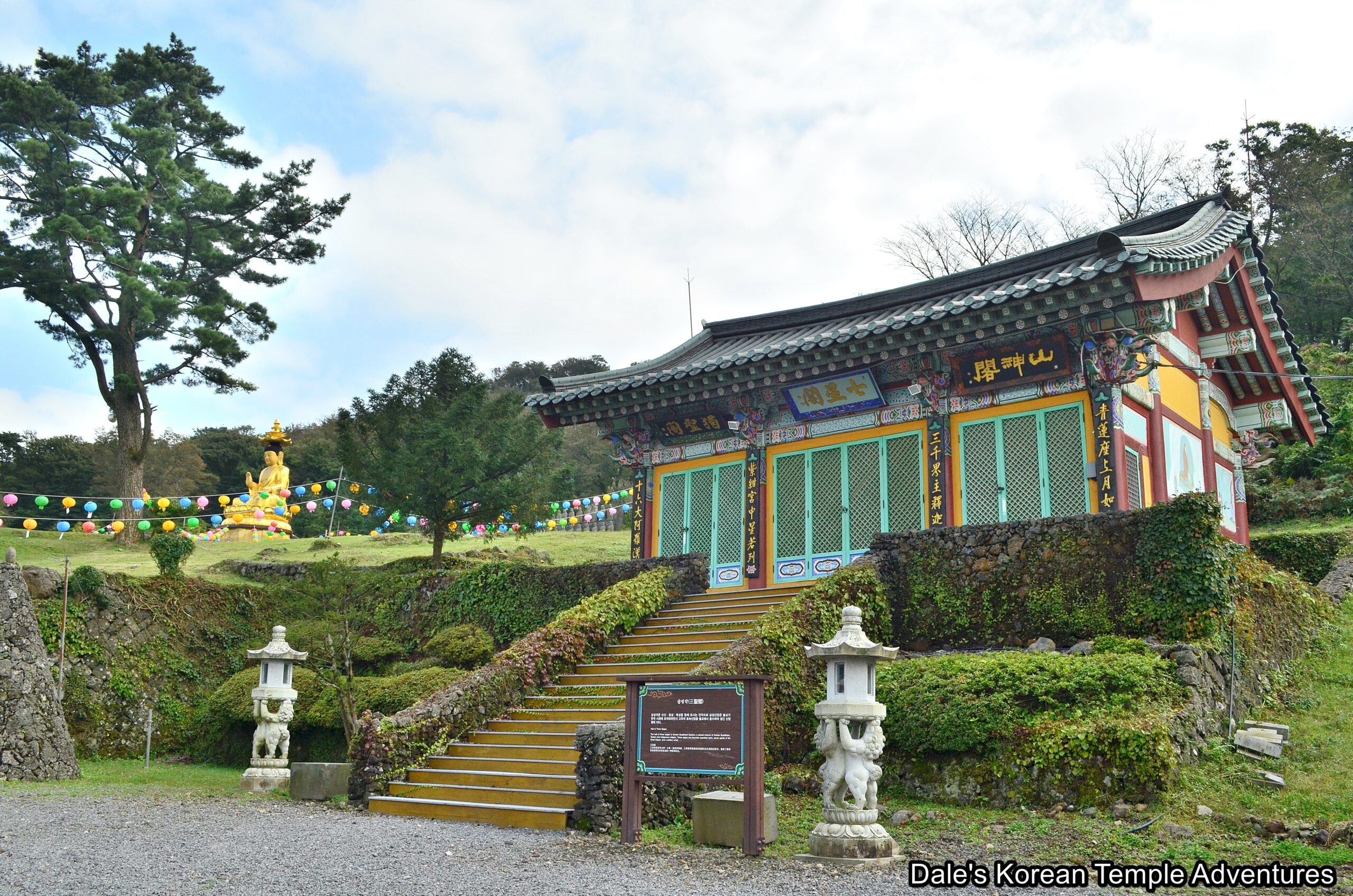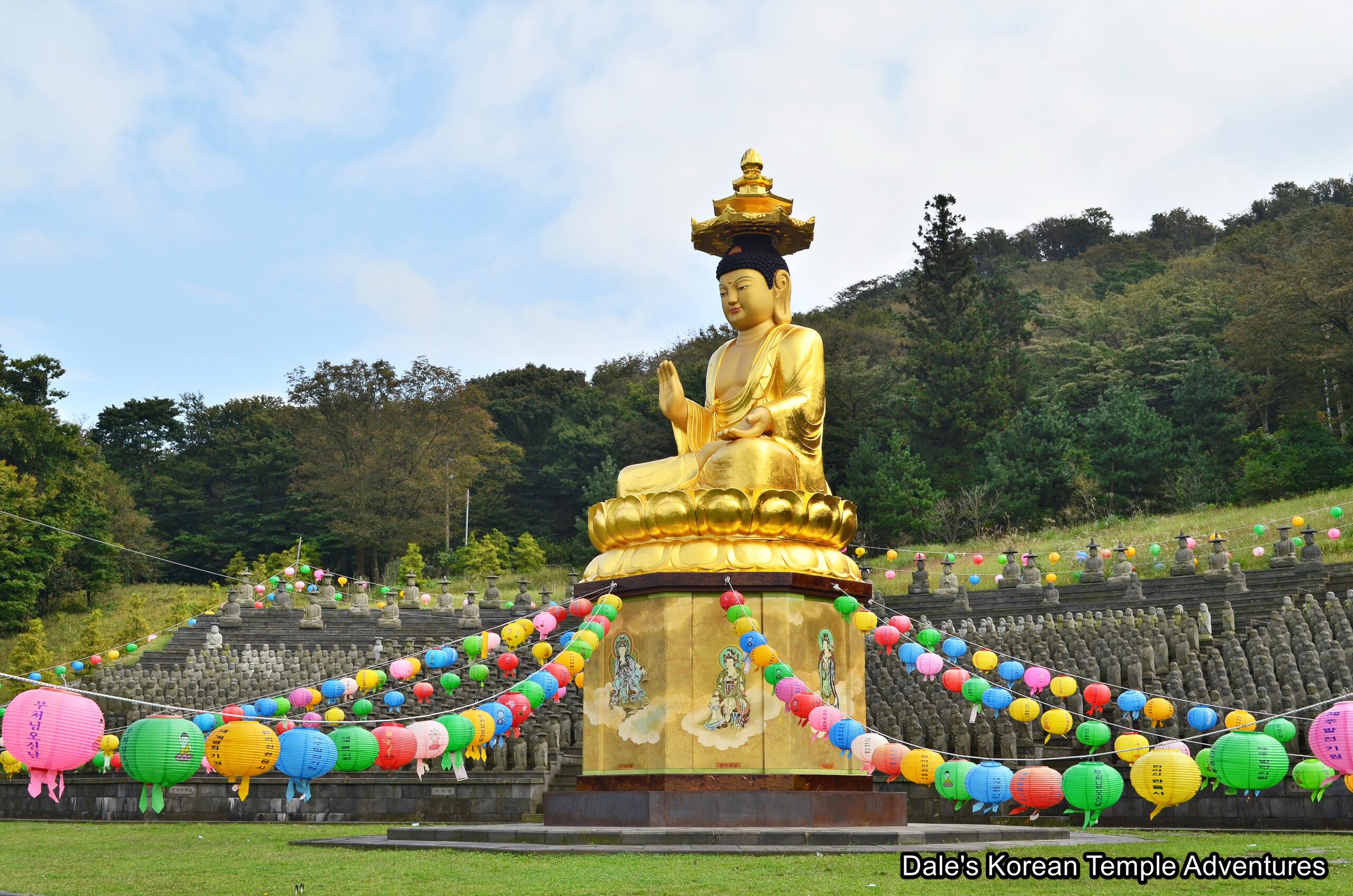Gwaneumsa Temple – 관음사 (Jeju City, Jeju-do)
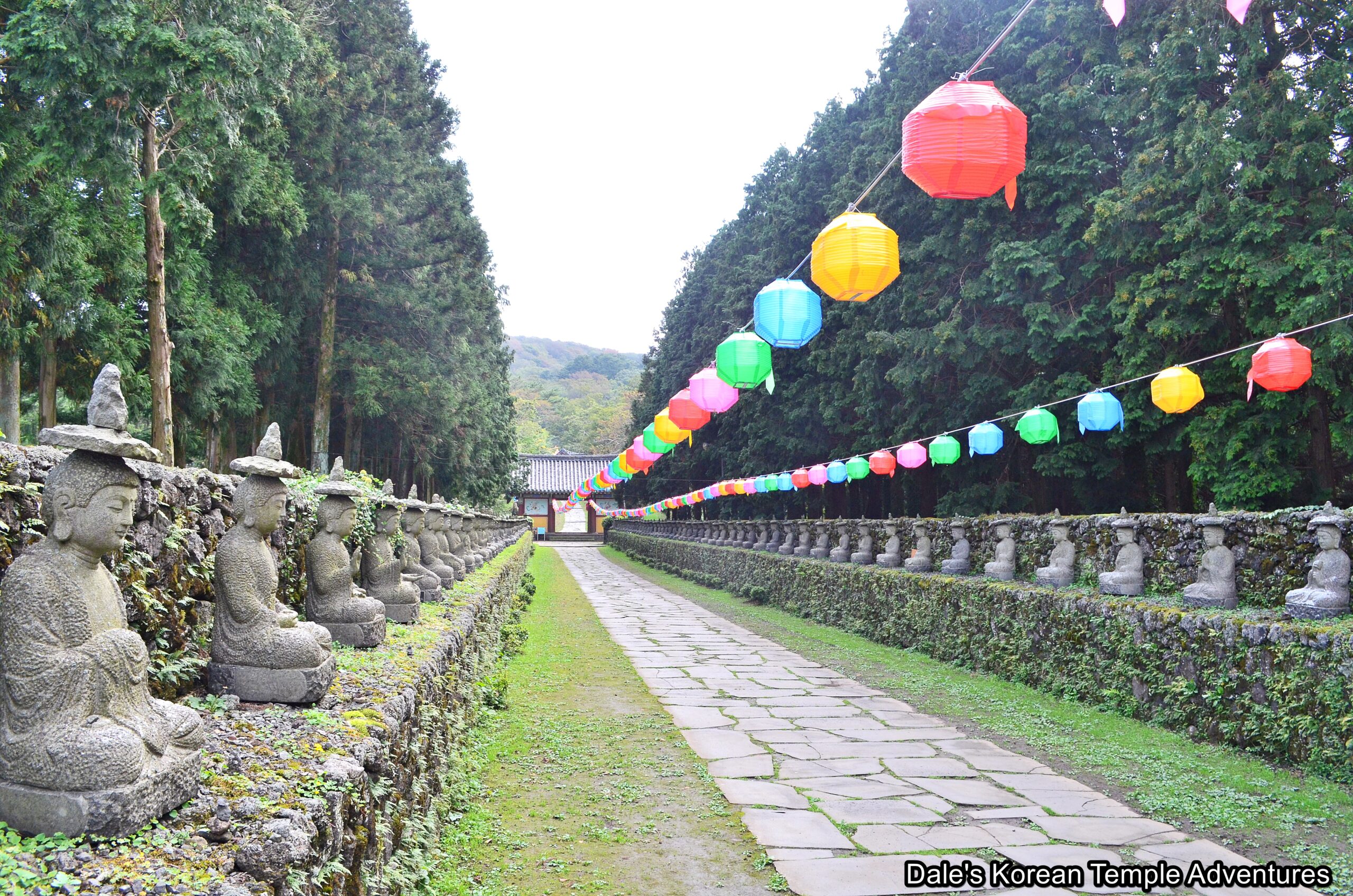
Temple History
Gwaneumsa Temple, which is located in Jeju City, Jeju-do Island, is named after the Bodhisattva of Compassion, Gwanseeum-bosal. A somewhat common name for a temple in Korea, Gwaneumsa Temple is located on the northeast side of Mt. Hallasan (1947.06 m). And the area around Mt. Hallasan is a National Park. In fact, alongside Mt. Jirisan (1915 m) and Mt. Seoraksan (1708 m), Mt. Hallasan is considered one of the three major mountains in South Korea. It’s believed that Gwaneumsa Temple dates back to sometime during the Tamna State – 탐라국 (耽羅國) (?-1404) rule over Jeju-do Island, during the Goryeo Dynasty (918-1392). More specifically, and according to locals, Gwaneumsa Temple dates back to the reign of King Munjong of Goryeo (r. 1046-1083). It’s also believed that Gwaneumsa Temple was the first Buddhist temple built on Jeju-do Island. Because of the heavy influence of Confucianism as a state religion during the Joseon Dynasty (1392-1910), and anti-Buddhism views at this time, Buddhism was largely suppressed. In fact, beginning in 1702, all Buddhists temples on Jeju-do Island were completely destroyed. It wasn’t until two hundred years later, and in 1908, that the monk Haewol began to rebuild and restore Gwaneumsa Temple to its former glory.
But yet tragedy was to strike Gwaneumsa Temple, again. Gwaneumsa Temple was the location of some of the Jeju Uprising’s (제주4·3사건, “Jeju sasam sageon,” in Korean) fiercest fighting. The uprising would last from April 1948 to May 1949. Residents of Jeju-do that were opposed to the division of the Korean peninsula into the North and South had started to protest as a general strike starting in 1947. These residents were opposed to the scheduled United Nations Temporary Commission on Korea (UNTCOK) that were to be held in the territory controlled by the U.S. Army Military Government in Korea. The Workers’ Party of South Korea, a communist party active from 1946-49, and who supported anti-imperialist and pro-communist ideology, created an insurgency starting in April 1948. They did this by attacking the police and members of the Northwest Youth League, a right-wing paramilitary group. The first president of the Republic of Korea, under the presidency of Syngman Rhee, only further exacerbated the problem by suppressing the uprising starting in August 1948. Then, in November of the same year, Rhee declared martial law. This started an eradication program that targeted the rebel forces in the rural areas of Jeju-do Island in March 1949. It only took a couple of months to defeat the rebel forces through extreme violence, torture, and murder. Later on, with the start of the Korean War in June 1950, even more rebel veterans and suspected sympathizers were killed. Also, the Jeju Uprising was officially censored by the South Korean government for decades. In total, between 14,000 to 30,000 people, about ten percent of the entire Jeju-do Island population, were killed. And an additional 40,000 Jeju-do Island residence fled to Japan. This violence by the pro-government forces helped contribute to the Yeosu-Suncheon Rebellion in Jeollanam-do between October to November of 1948. Some historians believe that the pro-communist versus pro-government forces of the Jeju Uprising was the true start to the Korean War.
During the Jeju Uprising, all the temple buildings were destroyed by fire. Gwaneumsa Temple was rebuilt and expanded in 1964. Both small and big lookout trenches, as well as military quarters, were built all around the grounds of Gwaneumsa Temple. And they can still be seen to this day to the right of the path from the Cheonwangmun Gate. These structures have been preserved to this day as a reminder to what happened in the middle of the 20th century on Jeju-do Island; and Gwaneumsa Temple, in particular.
Currently, and it’s from where Gwaneumsa Temple is located, that’s particularly popular among hikers of Mt. Hallasan for the steep climb and fall foliage. It should also be noted that Gwaneumsa Temple participates in the popular Temple Stay program in Korea.
Temple Layout
When you first approach the temple grounds, you’ll be welcomed by the rather wide Iljumun Gate which is adorned with a copper-coloured roof. Just beyond this entry gate is a pathway that leads up to the main temple courtyard. The path is lined by numerous stone statues of Mireuk-bul (The Future Buddha). And these statues are backed by beautiful, towering cedar trees. It’s one of the most picturesque entryways that you’ll find at a Buddhist temple in Korea. Slightly to the right, and just past the collection of cedar trees, is a large statue dedicate to Amita-bul (The Buddha of the Western Paradise). This large statue is surrounded by life-sized guardian statues.
A little further up the path, and you’ll next come to the Cheonwangmun Gate that houses four murals of the Four Heavenly Kings. Just past this second entry gate at Gwaneumsa Temple are another collection of Mireuk-bul statues; this time, however, they stand atop stone spires. It’s also in this area that you’ll find a cave where monks used to meditate. Now, the cave is a shrine for prayer. Before you enter the temple’s main courtyard, you’ll see a beautiful Koi pond with a brick pagoda in the centre to your left. The Temple Stay building is also in this area, as well as the temple’s gift shop.
Having now finally entered into the main temple courtyard, you’ll notice the main hall, the Daeung-jeon Hall, straight ahead. With its beautiful copper-coloured roof, and paper lanterns out in front of it, it makes for quite the nice welcoming committee to Gwaneumsa Temple. Housed inside the Daeung-jeon Hall is a triad of statues centred by Seokgamoni-bul (The Historical Buddha). This statue is joined on either side by Munsu-bosal (The Bodhisattva of Wisdom) and Bohyeon-bosal (The Bodhisattva of Power).
To the right of the Daeung-jeon Hall is the Myeongbu-jeon Hall. Housed inside this temple shrine hall, and resting on the main altar, is a large green-haired statue of Jijang-bosal (The Bodhisattva of the Afterlife). To the left of Jijang-bosal is an intricate mural of the Dragon Ship of Wisdom. And to the left of the Daeung-jeon Hall sits the temple’s bell pavilion, or “Jong-ru,” in Korean, as well as a stout three-story stone pagoda.
Housed slightly to the left rear of the Daeung-jeon Hall, and up a set of stairs, is the rather large Samseong-gak Hall. The exterior walls to this shaman shrine hall are decorated with various murals including a mural dedicated to the Bodhidharma. As for the interior, and hanging on the main altar, is a rather long and slender mural dedicated to Chilseong (The Seven Stars). This painting is joined on either side by murals dedicated to Sanshin (The Mountain Spirit) and Dokseong (The Lonely Saint), respectively. Perhaps most intriguing of the set, and a beautiful inclusion on the traditional set of three, is a mural dedicated to Yongwang (The Dragon King). The mural dedicated to Yongwang is vibrant, and it has the Dragon King stoically seated on his throne.
The final part of Gwaneumsa Temple that visitors can explore is a large golden statue of Mireuk-bul sitting on top of the neighbouring hillside. Mireuk-bul is surrounded by a pantheon of Buddhist figures including smaller sized statues of various Buddhas and Bodhisattvas. And slightly down the hillside, and to the left, are a triad of larger stone statues dedicated to Gwanseeum-bosal, Munsu-bosal, and Bohyeon-bosal.
How To Get There
You’ll first need to take a bus bound for Sancheondan from Jeju City. This bus departs every twenty minutes, and you should be on the bus for about thirty minutes. Where the bus drops you off at Sancheondan, you’ll need to walk an additional thirty minutes to Gwaneumsa Temple. The temple signs should hopefully guide you the rest of the way.
Overall Rating: 8.5/10
One of the most popular and famous temples on Jeju-do Island, Gwaneumsa Temple is both beautifully located, and it houses a variety of temple gates, shrine halls, and statues. Its tragic history is also the tragic history of Jeju-do Island, especially during the mid-20th century. The main highlights are the tranquil Koi pond at the entry, the large golden statue of Mireuk-bul on the hillside, the masterful Dragon Ship of Wisdom Mural, and the entryway of statues including the copper roofed Iljumun Gate. If you’re going to Jeju-do Island, and you’re wanting to visit a temple, Gwaneumsa Temple should be high on that list.
